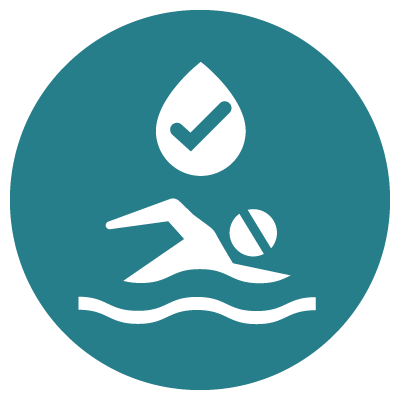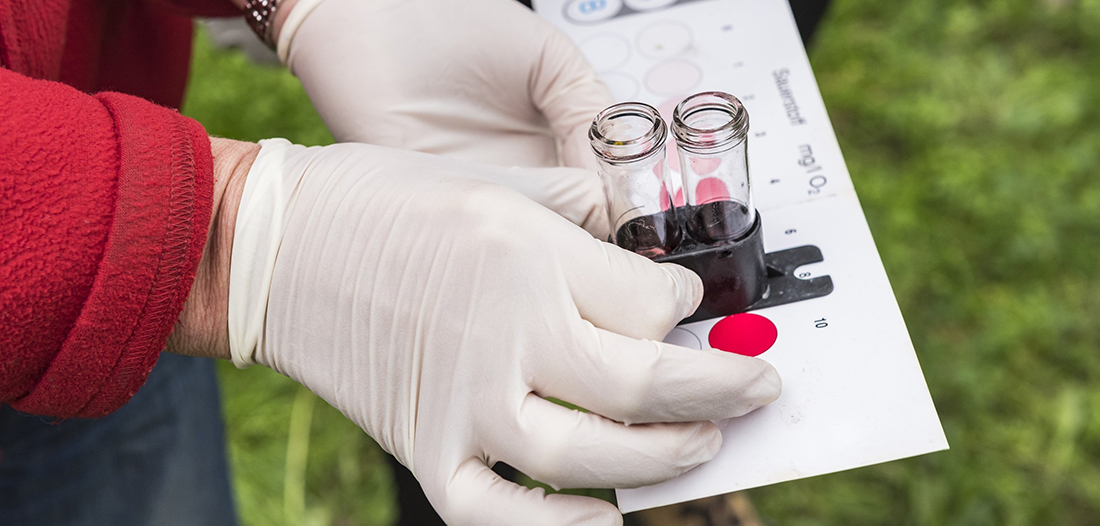Water-based recreation requires suitable water quality

Appropriate water quality is important to minimise human health risks associated with swimming, wading and paddling in rivers and estuaries.
Microbial contamination is a significant potential hazard to recreation in waterways and the focus of the recreational water quality condition.
Microbes occur naturally in the environment and in the gut of humans and animals. Some of them can cause illness and these are termed pathogens.
The greatest source of pathogens that can cause illness in people recreating in and on water is contamination with human waste, although some microbes from animal faeces can also lead to illness.
Untreated sewage releases during wet weather events, leaks in the sewerage system, illegal connections between the sewerage system and stormwater drains, poorly operating or old-design septic tanks, food waste discharges into stormwater and animal faeces draining from rural and urban catchments can all lead to elevated levels of pathogens in waterways.
Values supported by recreational water quality
Recreation and community connection
Water that is safe to come in contact with is essential to support recreational and community connection activities that involve contact with the water.
Recreational water quality monitoring
There are many different pathogens that could potentially be present in waterways and it's not practical to sample and test for each of them separately. The simplest way to get a good indication of the pathogen risk present in waterways is to use a single microbe that acts as a general indicator of the presence of faecal matter. E.coli is a common bacterium of the gut of most humans and animals. Most strains of E.coli are harmless, however, the presence of significant levels of E.coli in waterways can indicate when human and animal waste is present.
Weekly E.coli monitoring of 12 key recreation locations across the region occurs during the summer period when there is increased use of waterways for swimming, wading and paddling. The results are assessed against EPA's Environmental Reference Standards.
The following groups of recreational activities are often used to help assess water quality. These are based on the level of contact with the water:
Primary contact recreation: recreational activities where the person is in direct contact with the water, can be fully immersed, and can swallow it. For example, swimming, whitewater kayaking and water-skiing.
Secondary contact recreation: recreational activities where the person has direct contact with the water, but is not fully immersed, and is unlikely to swallow it. For example, boating, canoeing, wading, paddling, and fishing.
Some of the data is used to inform the regular forecasting of water quality for swimming in the Yarra that is issued by the EPA over summer.

Recreational water quality condition baseline and targets
2018 baseline: the baseline condition for recreational water quality used E.coli data collected between 2014 and 2018 and assessed compliance with the SEPP guidelines.
2068 target: the target represents the aspiration for achieving a minimum of secondary contact standards (high) across the region over the 50-year time frame and for areas currently achieving primary contact (very high) to be maintained.
Without significant effort to maintain sewage infrastructure, address rural-off and prioritise remediation of aging septic tanks in areas close to high recreation waterways, the recreational water quality condition will decline over time.
Number of rivers in each catchment by recreational water quality score
Hover, click or tap (on mobile) the charts below to view more information.
Baseline and trajectories in Rivers
Actions to improve recreational water quality
The Healthy Waterways Strategy includes actions to maintain recreational water quality at all 12 key recreation locations across the region. These include locations on the Werribee, Maribyrnong, Yarra and Patterson Rivers.
In the Strategy, actions include assessing and mitigating the potential impact of aging and poorly performing septic tanks on recreational water quality, especially in areas close to known recreation areas.